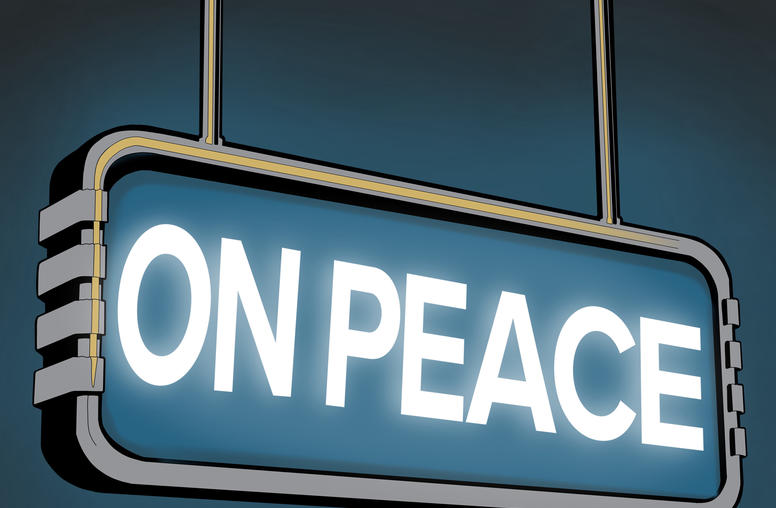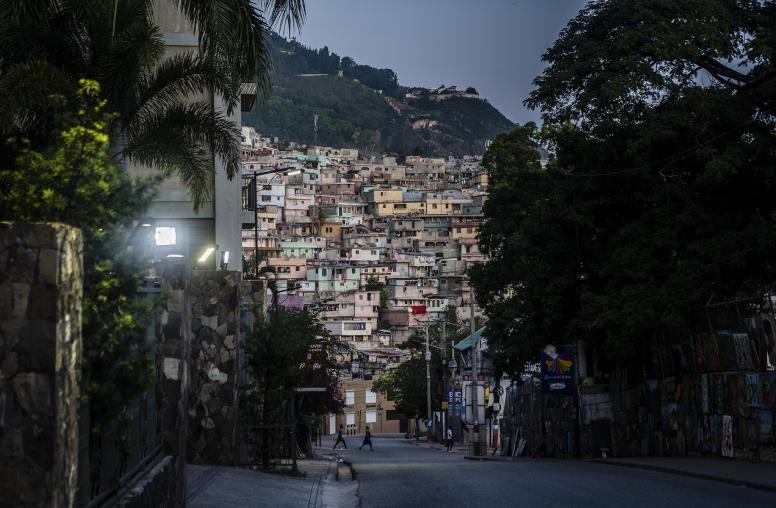Colombia: U.S. Aids Peace by Lifting ‘Terrorist’ Label From FARC
The move may help the U.S. better back a peace accord that remains fragile and insufficient.
The U.S. government has opened opportunities to strengthen the implementation of the fragile 2016 peace accord and stem rising conflict in Colombia by ending its designation of the former Colombian guerrilla movement, FARC, as a terrorist group. The decision also enhances incentives for peacemaking efforts with other armed groups in Colombia, including dissident factions, signaling that the international community will accept their transition away from war if they reach credible agreements in compliance with global judicial standards. By reaffirming the U.S. commitment to reconciliation in Colombia, moreover, the decision can strengthen efforts at national healing in a profoundly polarized society.

The State Department on Nov. 30 removed the FARC from its list of “Foreign Terrorist Organizations,” a status that prohibited U.S. officials and others from engaging with former members of the group, which signed its historic peace deal with the Colombian state over five years ago. That decision reflects today’s reality: What we knew as the FARC insurgency, with a hierarchical command structure, sophisticated weapons and territorial control over communities across nearly a quarter of the nation, no longer exists. Nearly all the 13,000-plus ex-combatants have embraced a transition to civilian life, but now struggle with many difficulties and tensions among themselves. Colombia and its partners must continue to symbolically welcome and concretely support these ex-fighters’ participation in socio-economic and political life on the condition that they fulfill the restorative justice requirements with victims established under the peace accord.
The decision also harmonizes the United States’ stance toward the FARC ex-combatants with those of the Colombian government and European Union, which each withdrew the “terrorist” listing from signatories of the peace agreement several years ago. Ultimately, all foreign policy sanctions seek to change condemned behaviors; to be effective they have to recognize when sanctioned groups have ended the actions that led to the initial designation.
Boosting U.S. Support to the FARC Peace Accord
The FARC’s successful disarmament and transformation resulted from an arduous negotiation in which the United States played an important role. In addition to its unconditional support for the Colombian state, U.S. Special Envoy Bernie Aronson engaged constructively with skeptical guerrilla commanders, guaranteeing them robust U.S. support for the peace process despite decades of counterinsurgent warfare and deep political animosities. While the United States has made important contributions to the challenging implementation of the agreement despite its terrorist designation of the FARC, last month’s decision provides a chance to finally contribute more comprehensively.
An expanded U.S. backing would undoubtedly include direct support for small business ventures created by former combatants as well as resolving frequent banking obstructions caused by the FARC’s inclusion on the terrorist list. Moreover, as one of the FTO lists’ explicit objectives is to “stigmatize and isolate” members of designated group the symbolism of the U.S. removal of the FARC can also help to counter the social marginalization of former FARC combatants, nearly 300 of whom have been killed since the signing of the accord.
Additionally, the United States will now be able to support the counternarcotics objectives of the FARC peace accord. In line with the White House’s new holistic counternarcotics policy with Colombia, U.S. agencies can more fully support Colombian programs for economic development, including help for farmers to replace coca leaf with legal crops. Some participants in those programs are former combatants or their families, a fact that blocked U.S. support while the FARC was listed as “terrorist.” As the State Department revised the terrorist list, the Treasury Department removed all senior former FARC commanders from its list of drug-trafficking kingpins, which may allow them to engage with U.S. agencies in counternarcotics efforts.
The United States will now also be in a position to widen its backing for Colombia’s transitional justice court, the Special Jurisdiction for Peace, which has been the subject of consistent attacks from opponents of the 2016 agreement, including most vocally from the current governing party. In announcing the update of the terrorist list, Secretary of State Antony Blinken celebrated the court’s convictions this year of key FARC leaders for an estimated 21,000 wartime kidnappings, constituting crimes against humanity and for which former guerilla commanders accepted full responsibility. Enhanced U.S. endorsements of the court’s legitimacy will be vital in the coming year, notably as critics press its judges for hard, prison-like sentences for those former guerrilla commanders—sentences that the court is not likely to impose under the “restorative justice” provisions of the peace accord.
Finally, the recent decision will allow U.S. officials to directly, unreservedly participate in international support for the peace accord’s implementation. Since 2016, the United States has shunned many meetings on the peace process to avoid engaging with people it formally designated as “terrorists.” Last week’s decisions can facilitate U.S. officials’ firsthand understanding of the progress and challenges in the process and let them reaffirm U.S. political support alongside allies within the international community.
Addressing the Ongoing Armed Conflict
As the United States removed the FARC from its terrorist list, it added several dissident groups of the former insurgency that either avoided or abandoned the peace process. These hardline commanders were ultimately far fewer than anticipated during the negotiations, but in recent years they have incorporated thousands of young new recruits. In addition to the longstanding insurgency of the National Liberation Army (ELN), these FARC dissident groups and other criminal organizations have alarmingly expanded their control over significant territories and populations.
That U.S. distinction in updating its terrorist list—adding violent FARC dissident groups as it removed ex-FARC members—undermines criticisms in Colombia by people who have attacked the peace accord by alleging that political parties and socio-economic organizations created by pro-peace former FARC members seeking to fully participate in public life have somehow maintained links with these violent dissidents who abandoned the peace accord’s implementation long ago.
It is critical to identify real incentives to deactivate these armed groups that drive the enduring armed conflict. Specifically denouncing the FARC dissidents alongside the ELN as designated terrorist groups is a welcome step. However, any comprehensive strategy also needs to include minimum concrete gestures to strengthen the arguments of those current guerrilla commanders who would favor a collective transition to civilian life. Hardliners benefit from the perception that that those who have already committed to peace, such as the former FARC, remain as stigmatized as those who remain dedicated to war. As such, the U.S. distinctions on the terrorist list form a critical message to those who would continue to seek a negotiated resolution or some form of collective disarmament within the ELN and other armed groups.
Persistent Challenges of Reconciliation
The United States’ decision can also enhance efforts to advance elusive reconciliation among Colombians. Some victims of the FARC’s past abuses retain deep wounds and understandably would prefer to maintain all forms of punishment against the former combatants despite the peace agreement. In response to criticisms of its delisting of the FARC as “terrorists,” the United States has had to clarify that the decision does not revoke the U.S. judicial indictments against former FARC leaders, nor will they ever be allowed visas to the United States. However, negative reactions to the declaration should be a reminder of the enormous resistance to reconciliation that remains in a deeply polarized Colombia. The country’s vice president, for example, reacted to the U.S. decision by saying that the FARC should never be forgiven.
The hundreds of public and private expressions of contrition by FARC leaders—before victims’ groups, communities and society at large—have been arduous but occasionally inspiring when well prepared on all sides. But their reach has been limited, unfortunately, considering the enormity of Colombia’s collective trauma and enduring violence. The delisting of FARC allows the United States to become even more intimately involved in these delicate, thorny but essential efforts.
Colombia faces deeply polarizing challenges in 2022. These will include emotional public responses to the expected sentencing of FARC commanders for kidnappings, and contentious presidential and legislative elections in the first half of the year. A new government will then have to lead a broader social catharsis once the nation’s Truth Commission publishes its final report before the end of the year outlining the causes of the war with the FARC insurgency, responsibilities of its participants, and recommendations to promote healing as well as solutions to the ongoing armed conflict. The report’s public reception will certainly include expressions of outrage at abuses committed by all actors including the security forces, which some Colombians will see as equal or greater than atrocities committed by the former FARC.
As Colombia’s closest ally, the United States will need to continue to model the ambitious spirit of reconciliation outlined in the 2016 peace accord which it has so deeply committed to supporting. The November 30 decision can constitute another humble step in that direction.


